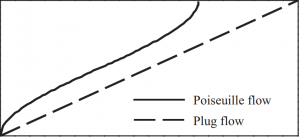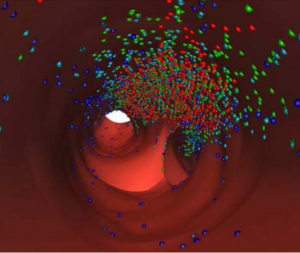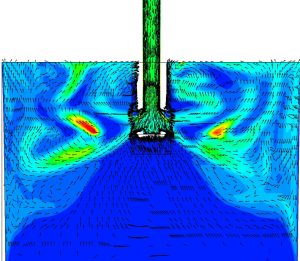
Particle trajectories in a parabolic and constant velocity profile
Capturing particles or droplets from a flow is relevant for various applications like continuous separators, aerosol removal, and magnetic drug targeting. In a laminar flow, doubling the capturing of a small fraction of particles turns out to require a four times higher force or length of pipe or a four times lower flow velocity (Eq. 12). This is because particles from twice as far away have to be captured from a location where the flow velocity in a laminar flow is also twice as high. This simple scaling law, with an analytical correction for flow through cylindrical pipes (Eq. 35), turns out to hold well for a wide range of different force fields.
![]() Magnetic particle motion in a Poiseuille flow
Magnetic particle motion in a Poiseuille flow
J. W. Haverkort, S. Kenjeres, and C. R. Kleijn
Annals of Biomedical Engineering, vol. 37, nr. 12, p. 2436-2448
© 2009 DOI: 10.1007/s10439-009-9786-y



